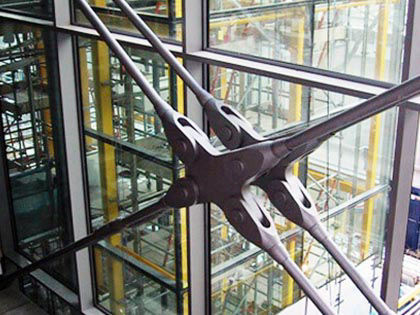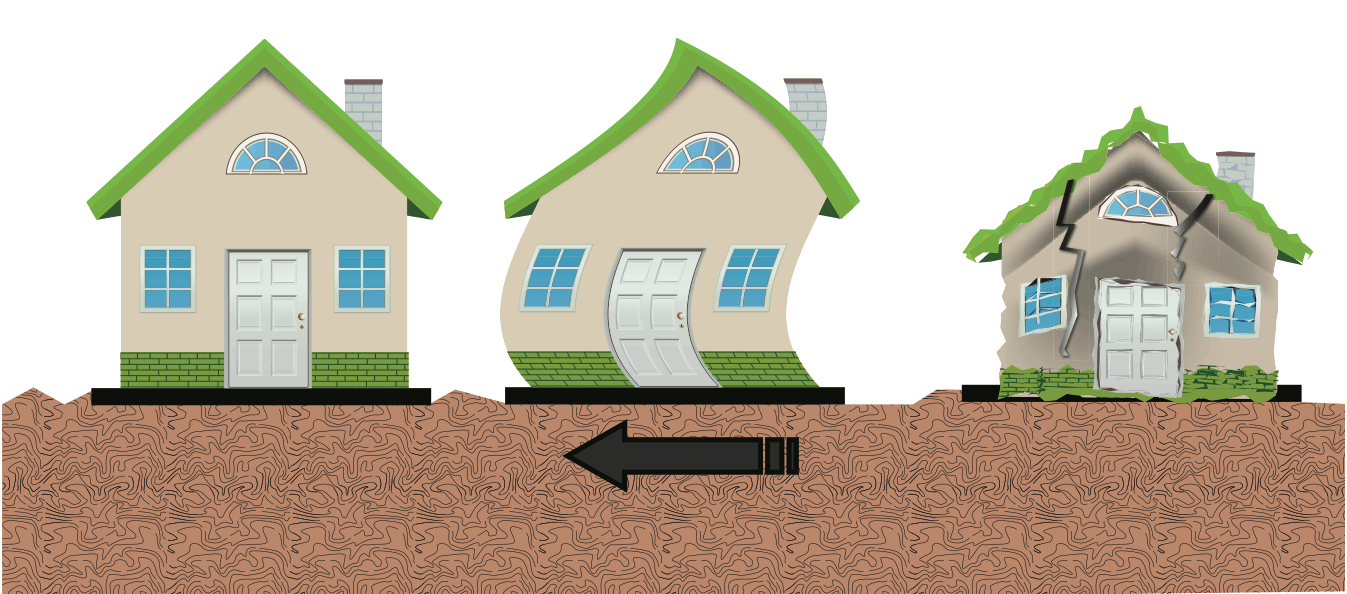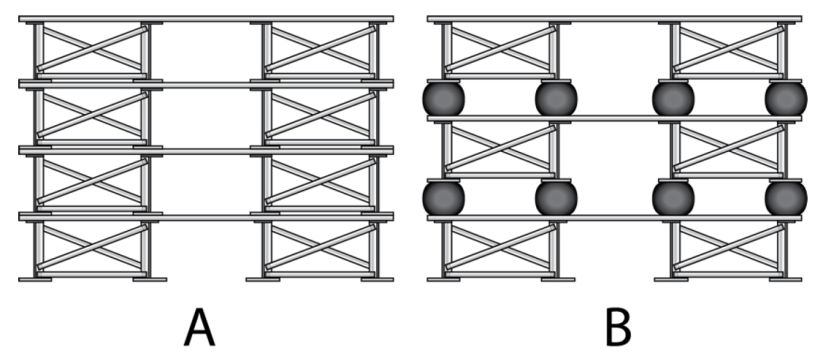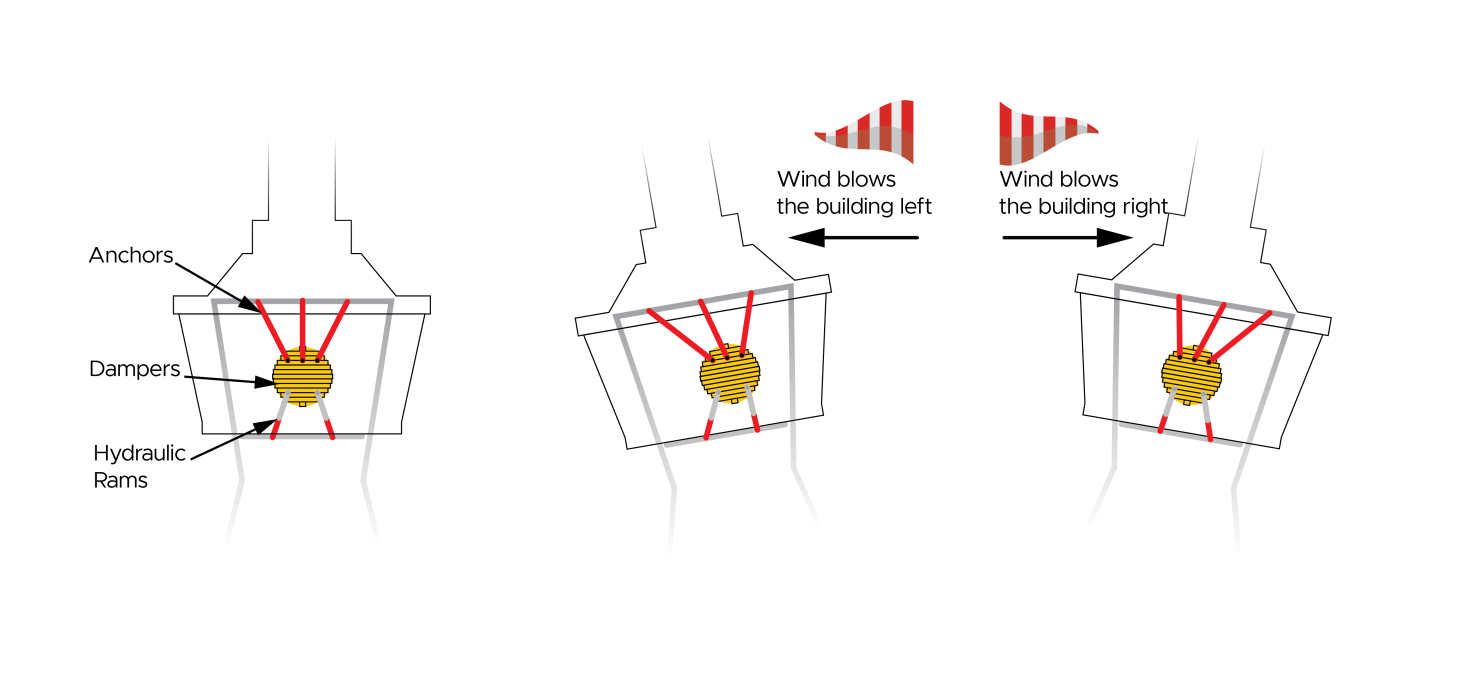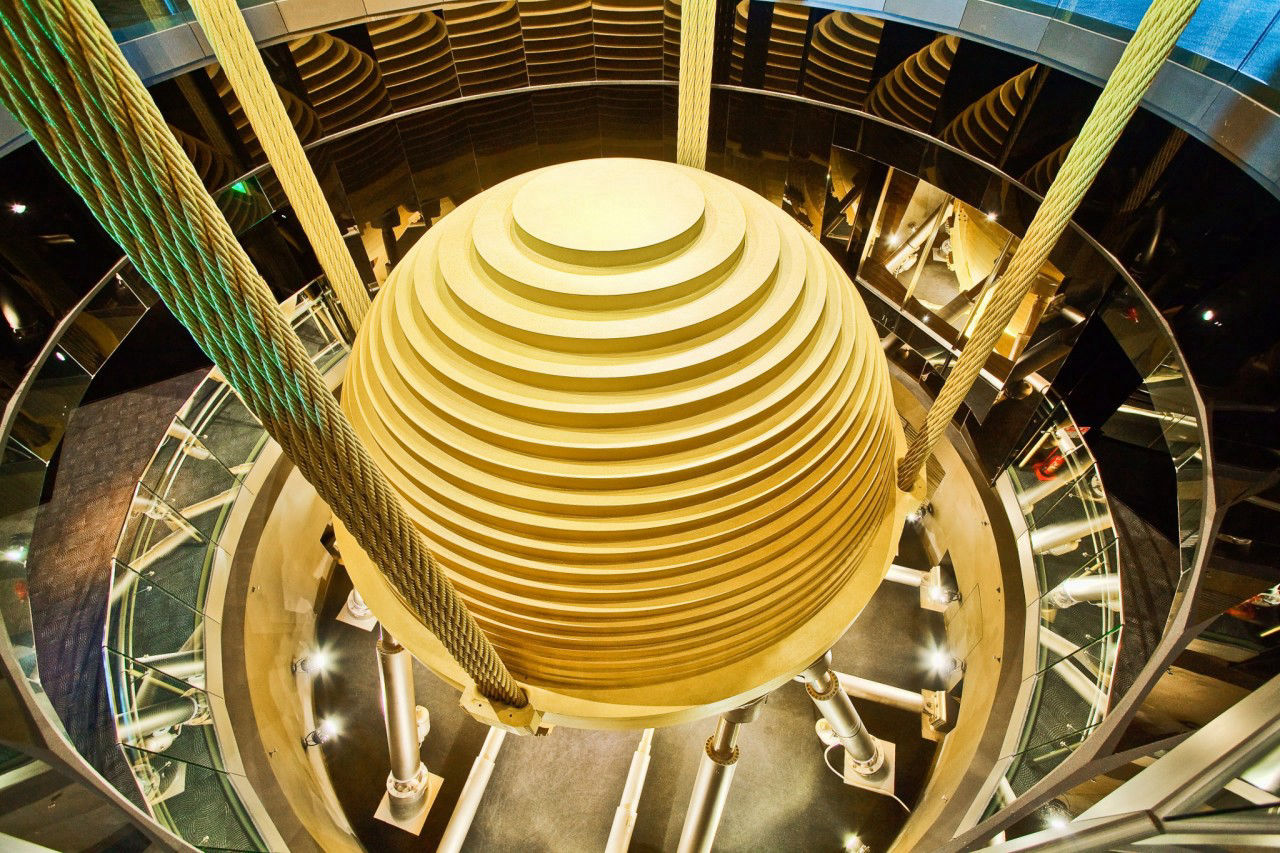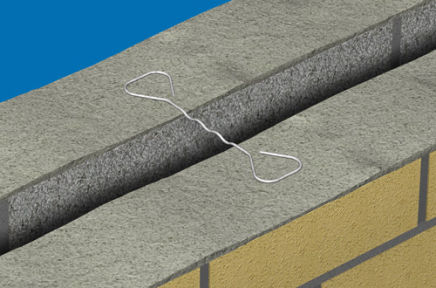
One way to make a simple structure more
resistant to these lateral forces is to
tie the walls, floor, roof, and
foundations into a rigid box that
holds together when shaken by a
quake. This picture shows a stainless steel
wall tie, which literally binds together
the outer and inner wall. This keeps
both the cavity (gap) regular and
increases the strength of the wall.
